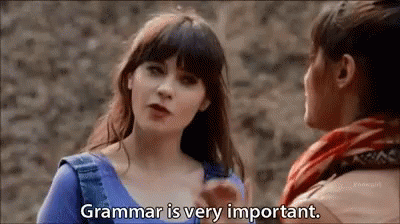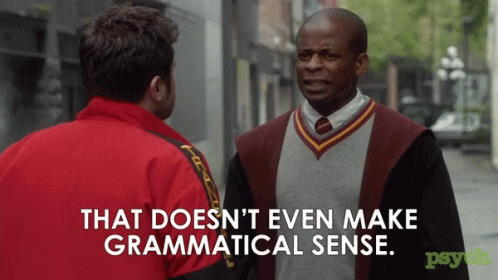Poetry is convenient for practicing analysis and annotation skills because it's shorter, they are sometimes humorous, and they allow for a wide range of interpretations by the reader.
Many of us may feel nervous about reading and analyzing poetry in fear that we will be "wrong." While poetry does take a lot of mental energy to interpret, it doesn't necessarily mean that the meaning is any harder to determine. As long as you can support yourself with text evidence and explain yourself clearly, you cannot be "wrong" when analyzing poetry.
We began by looking at a poem called "Dating Myself" by a poet named Poetri. You can see the video of him performing it below along with a copy of the poem itself.
We began our annotations by numbering the lines and counting the stanzas. This helps to give the reader a quick reference point when searching for text evidence or answering questions over the poem.
Stanzas are like poetic paragraphs. They are usually denoted by a gap or a line break. We didn't see any of those in "Dating Myself," so we concluded that there was only ONE large stanza.
Some people assume that poems are only poems because they rhyme. NOT TRUE! Poems do not HAVE to rhyme. Some of them do, though, just not in the way we expect. Some of them have internal rhymes. "Dating Myself" had a few internal rhymes, which we labeled on the poem itself.
Rhymes and other sound devices are used as attention grabbers, or even to accentuate how a poem should be HEARD. Just like stanzas, they are used deliberately by the poet to try and draw the reader's attention to the deeper message by making certain words, phrases, or lines stand out more than others.
Next, we moved on to repetition. Repetition can happen anywhere in a poem. While looking at "Dating Myself," we noticed many of the words he repeats are:
- I
- Myself
- No
- Like
- Man/Guy
- Women/Girl
We then moved on to examining the tone of the piece. Every class had a different response, and this is for the same reason that you cannot be "wrong" when analyzing poetry. Everyone sees this text a little differently! There were some overlaps, as you can see in the scans of the notes below, but ultimately, each class had a slightly different perspective on the piece.
We began by circling words we saw that had strong emotional meaning, words like "fatigued" and "consumed" and "amaze."
Overall, we found that while Poetri starts his poem with a tone of uncertainty and frustration, he ends with an attitude of determination and confidence. His decision to date himself - to appreciate himself for who he is rather than wonder what it is he's lacking - is what makes him confident and, ultimately, more attractive to the opposite sex.
This helped lead us to determine the theme of the poem. Some subjects we identified within this piece were:
- Dating
- Confidence
- Self-worth
- Self-love
- Relationships
- Insecurity
This helped guide us to our theme. Every class had a different theme, especially depending on which gender we focused on. You can see some of them in the scans below.
Lastly, we looked at how poets sometimes use non-standard English in a poem, especially in modern poetry. Ultimately, we just wanted to show how it is sometimes OKAY to break the standard grammar rules, as long as it is done with PURPOSE.
On block day, we are going to independently practice analyzing poetry. We developed a list of things to annotate for based on the various questions that have been asked in the past on the STAAR. I know it's a lot, so I decided to do it on my own with a poem of my choosing, "High School Training Ground" by Malcolm London. You can see my annotations and the video below
Yes, I want your paper to look that messy afterwards. Thinking is messy. Thinking is chaotic. Our brains are filled with nerves and synapses like wild vines in the Amazon Rainforest, not neat file folders and catalogued memories.
 |
| Watch out! Ms. Hamman's being extra again! |
So, you can see what I want you to annotate for below, along with the 4 poems you can choose from. JUST CHOOSE ONE. You may do more than one for extra credit if you wish.
Now, please, read this and take heed: FOLLOW THE STEPS. Don't try to do everything at once! You will get overwhelmed and frustrated. Do ONE THING at a time. We deliberately ordered them to build on one another. And don't SKIP steps. That's a good way to forget to do them later and then lose points.
If you need help choosing from these poems, here's a quick break-down:
- "Still I Rise" by Maya Angelou - If you are feeling sassy and confident, this is the poem for you!
- "To My Favorite..." by Billie Collins - A feel-good letter from father to daughter. For those who are sentimental or need faith in humanity restored
- "Spring in the Classroom" by Mary Oliver - A poem that starts off complaining about school, but turns into an intriguing scandal
- "First Period" by Kevin Derrig - For those days when you just feel like nothing is going right and you want people to understand why you're frustrated
We will complete these annotations in class and they will be due by the end.







































